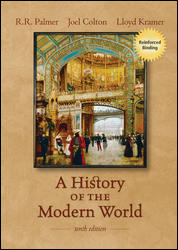
History of the Modern World, 10th Edition (Palmer)Chapter 23: Postcolonial Nations in Asia and Latin AmericaChapter OverviewAt the end of World War II, most of the colonial countries found themselves too exhausted to oppose the demands for independence and national sovereignty emanating from the colonized regions of the world. Only France, Portugal, and the Netherlands resisted the independence movements of their colonies. The demise of the British empire in Asia gave birth to the new nations of India, Pakistan, Bengal, Burma, and Malaysia. The partition of India into two nations, one Hindu and one Muslim, set the stage for recurring conflict between India and Pakistan. Although India made astonishing economic advances in the decades after independence, much of its population remained poor. Pakistan also struggled to overcome poverty, and its history has been further complicated by the dominance of the military in its political life. A repressive military also shaped Burma’s postcolonial experience. Malaysia, despite ethnic tensions, made steady economic progress until late in the twentieth century. Indonesia and Indochina’s transitions from colonialism to independence were less peaceful than the formerly British colonies. After a bloody struggle against a communist insurgency, Indonesia made the transition to a more democratic form of government, only to face further troubles from Muslim extremists. Vietnam’s search for independence lasted for two and a half decades and involved a war with both the French and the United States. The Philippines too fought against the imperialism of the United States throughout much of the century. Latin America, independent for nearly a century and a half at the end of WWII, continued to struggle against the legacy of colonialism. Economic crises, American imperialism, and the rise of authoritarian regimes troubled the region in the latter half of the twentieth century. At the start of the twenty-first century, democracy had flowered around the region, but remained fragile. |  |















